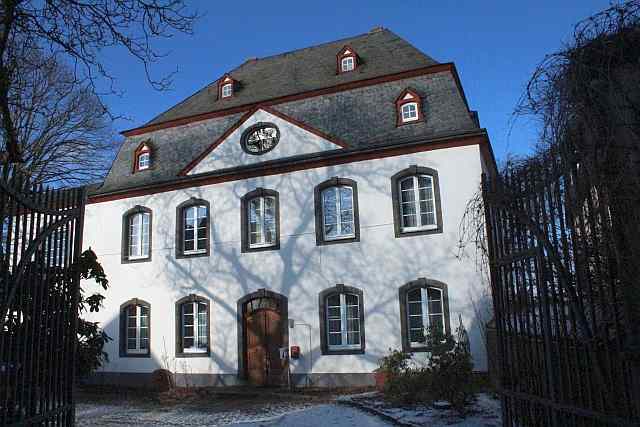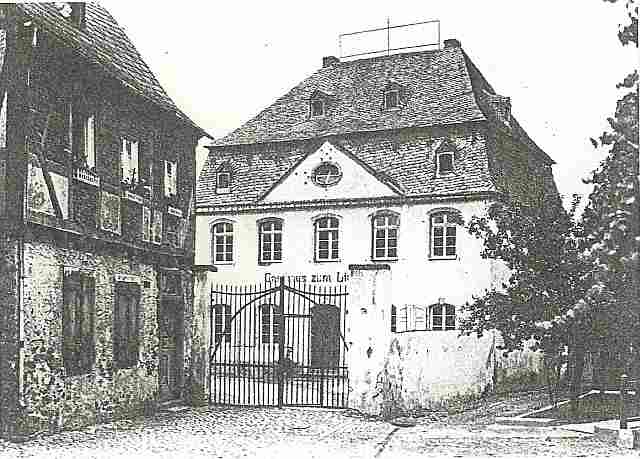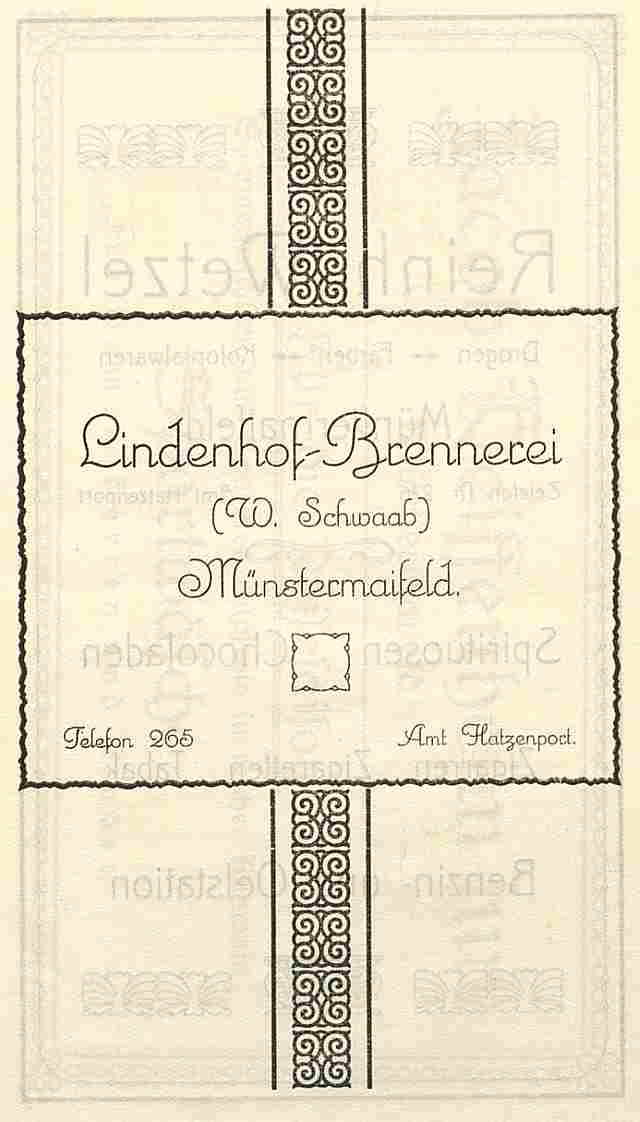3. Lindenhof
Built in 1770
The Canons House was used
for commercial purposes in the
19th and 20th century. 1948 from the
1st floor upwards reconstruction.
Like the majority of abbey’s real estate, the building that was erected by an abbey vicar in 1770, passed into the ownership of the French government in 1802. It was purchased by a former canon at an auction and, following numerous sales, has been used commercially since 1862. As an inn and distillery, it bore the name "Lindenhof". In 1948, the present-day owner family had the baroque estate’s structure removed, down to the first floor, after which it was rebuilt in accordance with the original measurements.
In the courtyard of the present house,

which was rebuilt from the first floor upwards to the original in 1948, there was a canon's house until 1689. The building burned down to the cellar in 1689 during the destruction of the city by the soldiers of Louis XIV.
It was not until 1770 that a new house was built by the canon Hubert von Coels. Hubert von Coels, born near Adenau in 1736, belonged as Custos (1779-1798) to the four highest-ranking canons of the monastery: Dean, Scholaster, Cantor and Custos. The Custos administered the church treasury and the archives. The governing body of the monastery was the chapter, the assembly of the canons.
Numerous conditions had to be met in order to become a full member of the chapter. Ordination to the priesthood was not one of the requirements.
As a canon, one was in possession of a benefice. The number of resident canons varied from 12 to 16, and not all canons were required to be present. Also, to promote the development of the university in Trier, a canonry was provided in 1474 to supply a lecturer. Only the members of the chapter could become holders of the dignities, as bearers of special dignity and responsibility. Like the above-mentioned Hubert Coels as a custodian. The provost stood opposite the chapter with his own rights, duties and income. Until 1515 he was usually elected by the chapter and confirmed by the archbishop. Often the recommendations for filling the benefice came from Rome. There were repeated disputes over the filling of the provost's benefice. After 1515 the archbishop of Trier received the office of the provost as an additional dignity and source of income. The provost had to defend the privileges, goods and revenues of the collegiate church and to hold the "Sendgericht". He decided on a part of the vacated benefice. Besides the canons there were the vicars and altarists. They had the task of celebrating the endowed masses and annual memorial for the deceased at the altars assigned to them. Their number depended on the number of altars. In the administration of their goods and income they were subordinate to the chapter.
After von Coels, Johann Jakob Zunderer, canon of the monastery from 1773-1802, acquired the house in 1802. The former canon became known as a successful farmer in the Maifeld. We have information about the former canon's house again in 1862. The innkeeper Nikolaus Strauchscheid from Münstermaifeld acquired it and opened the inn "Zum Lindenhof".

This existed until the 20s of the last century. In 1922, the merchant Wilhelm Schwab took over the house, now called "Lindenhof", together withe distilling rights and operated the fruit and wine distillery of the same name until 1952.

Glossary
Dean
The dean was at the head of the chapter, the assembly of the canons. As a rule, he was elected by the chapter and confirmed by the archbishop. He was also responsible for supervising discipline in the monastery. The reprimands of indiscipline were repeated until the 18th century. For example, the canons and vicars found it difficult to adhere to the dress code. The ban on wearing a knife at the belt had to be reminded again and again, as did the renunciation of wearing gloves and nailed shoes. The services in church often lacked the necessary devotion. For example, letters were read during the choir prayer and people talked to each other during the service. A repeated admonition was directed at drinking habits after funerals and during Shrovetide.
Scholaster
The Scholaster was the head of the collegiate school. The schoolmasters and pupils were under his supervision. He represented the dean in his absence.
Cantor
The cantor led the singing at church services and choir prayers. He was also responsible for ensuring that no secular or inappropriate melodies were played on the organ.
"Sendgericht"
The send was a spiritual court. In Münstermaifeld, it was the provost until 1515, then the dean on behalf of the archbishop who presided over the Send. He was assisted by the "Sendschöffen", usually 7, who recited the transgressions of which they were aware and attended the judgement of the "Sendrichter". For the members of the parish of Münstermaifeld, the Send began every Friday after the Feast of the Exaltation of the Holy Cross (14th September) in the collegiate church in front of the altar of Severus: Unpaid interest, failure to hold annual memorial services, failure to attend communion, usury, perjury, adultery, fornication, quarrels, unobserved feasts. In most cases, reprimands and admonishments from the pulpit were sufficient, and more rarely public exposure for example through a stone that they had to wear on a collar, the stone of shame or vice. As late as 1768, the married couple Matthias and Anna Geis had to perform public penance in the collegiate church. They knelt barefoot during the mass, holding a candle in their right hand and a rod in their left. This penance, customary in cases of adultery, was banned in 1782 by Archbishop Clemens Wenzeslaus.



